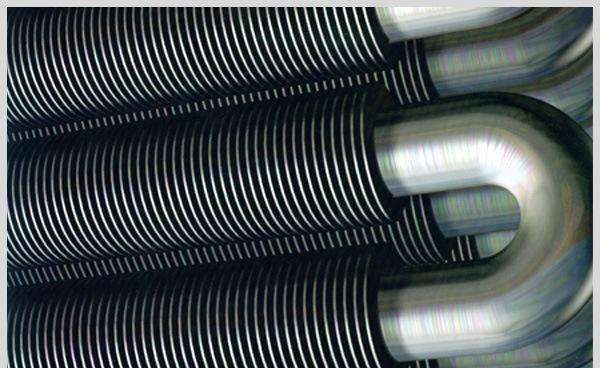How to produce the welding spiral fin tube?
How to produce the welding spiral fin tube?
The production process for welding spiral fin tubes involves several steps. Here is a general overview of the process:
1. Welding spiral fin tubes preparation: The first step is to prepare the base tube and the fin material. The base tube is typically a seamless steel tube, while the fin material can be a separate strip made of a suitable material such as carbon steel, stainless steel, or alloy steel. Material selection: The base tube material is typically a seamless steel tube chosen based on the specific application requirements, such as temperature, pressure, and corrosion resistance. The fin material can be made of various metals, including carbon steel, stainless steel, or alloy steel, depending on the desired properties and compatibility with the working environment.
2. Welding spiral fin tubes finning: The fin material is helically wound around the base tube to create the spiral fin pattern. This can be done using specialized finning machines that wrap the fin strip tightly and uniformly around the tube. The pitch (spacing between fins) and the fin height can be adjusted based on the desired specifications.
3. Welding spiral fin tubes fixing the fin: After winding the fin strip, the ends of the fins are usually welded or mechanically fixed to ensure they remain in place during subsequent processes. Welding the fin ends provides a secure attachment to the base tube.
4. Welding spiral fin tubes finning methods: There are two common methods for creating the spiral fin pattern on the base tube:
- Continuous spiral finning: This method involves continuously winding the fin material around the base tube in a helical pattern. The fin strip is fed through a finning machine, which rolls the strip onto the tube, gradually forming the spiral fin configuration.
- Discontinuous spiral finning: In this method, individual fin segments are attached to the base tube in a spiral pattern. The segments are typically pre-formed and welded or mechanically fixed to the tube at specific intervals along the length.
5. Welding spiral fin tubes welding process:
- Resistance welding: Resistance welding is commonly used for joining the fins to the base tube. The process involves passing an electrical current through the fin-to-tube interface, causing localized heating and melting. Pressure is applied to forge the materials together, creating a solid weld joint. This method is efficient, reliable, and provides a strong bond.
- TIG welding: TIG welding is another option for welding spiral fin tubes. It utilizes a non-consumable tungsten electrode, an inert gas shield, and filler material (if required) to create the weld. TIG welding offers precise control over the welding process and is suitable for thinner fin materials or applications requiring high-quality welds.
- Solid-state welding: Solid-state welding methods, such as friction welding or friction stir welding, can also be used to join the fin and the tube without melting the materials. These methods rely on heat and pressure to create a solid-state bond between the materials.
6. Welding spiral fin tubes heat treatment (optional): Depending on the material properties and application requirements, a heat treatment process may be applied to relieve residual stresses and enhance the mechanical properties of the welded spiral fin tube.
7. Welding spiral fin tubes inspection and finishing: After welding, the welded spiral fin tube undergoes various inspection methods to ensure the quality of the welds, including visual inspection, non-destructive testing (such as ultrasonic testing or radiographic testing), and dimensional inspection. Once the tube passes inspection, it may undergo surface finishing processes, such as cleaning, polishing, or coating, to improve its appearance and corrosion resistance.
8. Welding spiral fin tubes quality control:
- Visual inspection: The welded joints are visually inspected to check for proper fusion, weld shape, and any visible defects.
- Non-destructive testing (NDT): Various NDT methods, such as ultrasonic testing (UT) or radiographic testing (RT), may be employed to detect internal defects or discontinuities in the welded joints.
- Dimensional inspection: Measurements are taken to ensure that the fin height, pitch, and overall dimensions of the welded spiral fin tube meet the specified requirements.
9. Welding spiral fin tubes surface treatment and finishing: After welding, the welded spiral fin tubes may undergo surface treatments to enhance corrosion resistance or improve aesthetics. This can include cleaning, pickling, passivation, or applying protective coatings.
10. Welding spiral fin tubes documentation and certification: The manufacturer typically provides documentation and certification, including material certificates, welding procedure specifications (WPS), welder qualifications, and inspection reports, to ensure trace
Its important to note that specific manufacturing processes, welding methods, and quality control measures may vary depending on the manufacturer, the materials used, and the specific application requirements. Adherence to relevant welding standards and guidelines, such as those provided by the American Welding Society (AWS) or other applicable codes, is crucial to ensure the production of high-quality welded spiral fin tubes.


